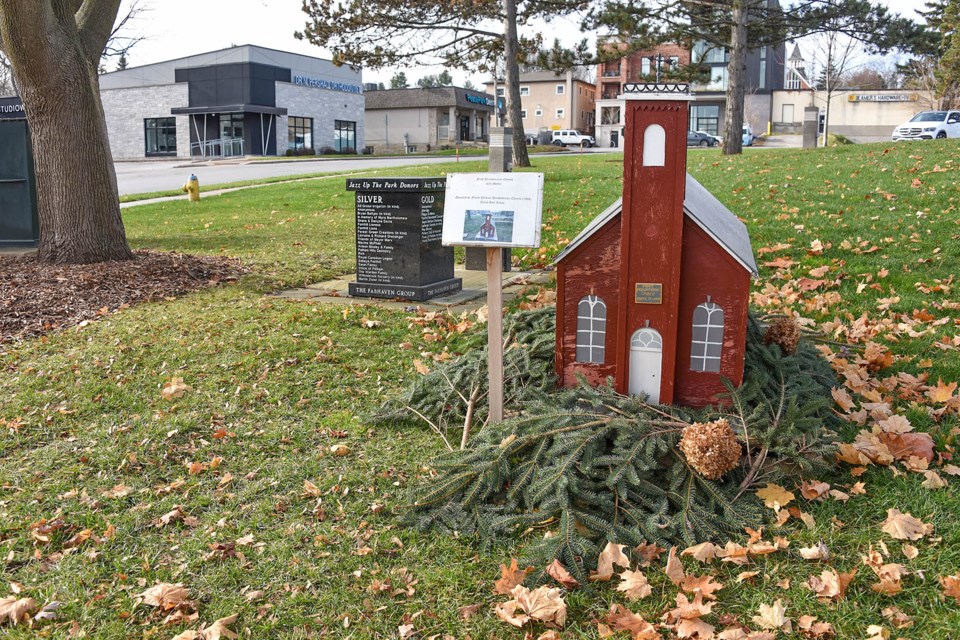Temperanceville display at Peace Park
Miniature village of Fonthill in its early days
Volunteers and friends of the Rotary Club of Fonthill met at the Fonthill Bandshell in late November to set up the annual miniature village of Temperanceville, a title bestowed upon the village for a short period in the mid 1800s. About 1842 the name Osborne’s Corners had been adopted, which was replaced by Temperanceville, and finally Fonthill. The naming was in tribute to Fonthill Abbey, a large Gothic Revival country house in Wiltshire, England.
The tiny buildings have been a seasonal display for 33 years, and will be at Peace Park until the end of December. The Temperanceville miniature village was first envisioned in 1993 by a group of Fonthill Rotarians, who continue to provide artistic, construction, maintenance, and restorative work on the village.
Keith's Restaurant was the first replica built. It is currently being restored, along with several others, and is not part of this year's display, which includes about 15 buildings. The oldest building currently on display is the Print Shop, built in 1993. There are two churches currently in the display that were built by their respective congregations, the North Pelham Presbyterian Church (1994) and the Holy Trinity Church (2012).
Fonthill Rotarian Doug Burr, who passed away after a battle with cancer in 2017, always provided hot refreshments for the setup of the village. Doug's daughter and son-in-law still provide this service, courtesy of their family Tim Horton's franchise.
So why “Temperanceville” as a name for the village?
Graham Segger’s book, The Land at the Crest of the Hill: Clues to Niagara History from Upper Fonthill, describes how, throughout Fonthill’s early history, there was strong support for organizations opposed to liquor, including the Sons of Temperance, the Royal Templars of Temperance, and the Fonthill Women's Christian Temperance Union. Quakers in the area had established abstinence from alcohol as one of their core values, as did local Baptists, Evangelicals, and Church of God supporters. Anglicans, Presbyterians, and Catholics, by comparison, were more inclined to enjoy a tipple.
The 1864 Dunkin Act gave local governments the option of banning the sale of alcohol, either by popular vote or a resolution of the local town councils. Under the Canada Temperance Act of 1878, also known as the Scott Act, only Pelham and Thorold townships retained the ban on booze in Niagara.
By the late 1800s, Fonthill had become a thriving community, with a land registry office, a library, several churches, a three-storey high concert hall (which also housed a grammar school and a two newspapers), two general stores, a harness shop, a shoe shop, a blacksmith shop and carriage factory, a bakery, two tailor shops, and a meat market. Fonthill even had a cigar factory.
The first stretch of cement sidewalk was built in 1903, and electricity was brought to the village in 1909. In 1907, a trolley line was built from St Catharines to Fonthill, which officially became a village in 1922.




